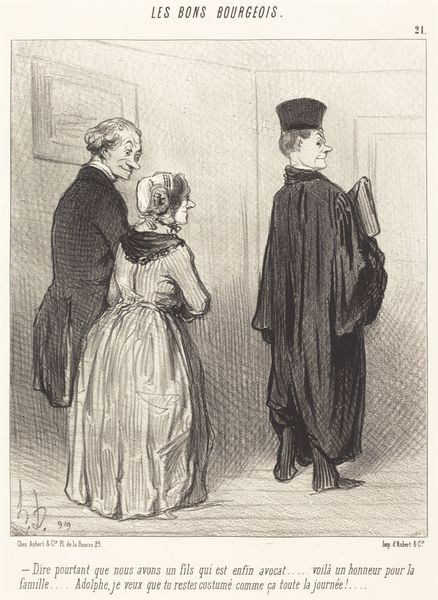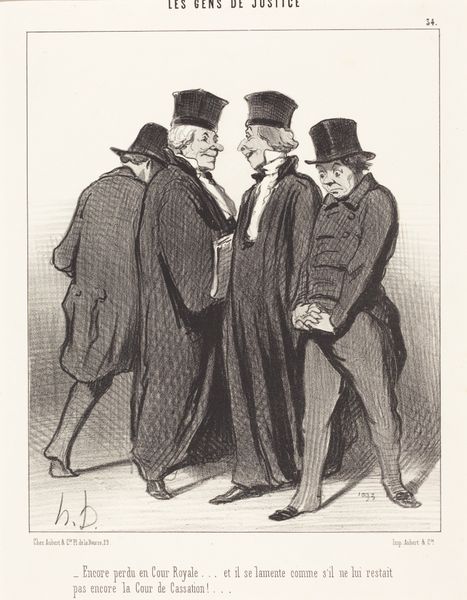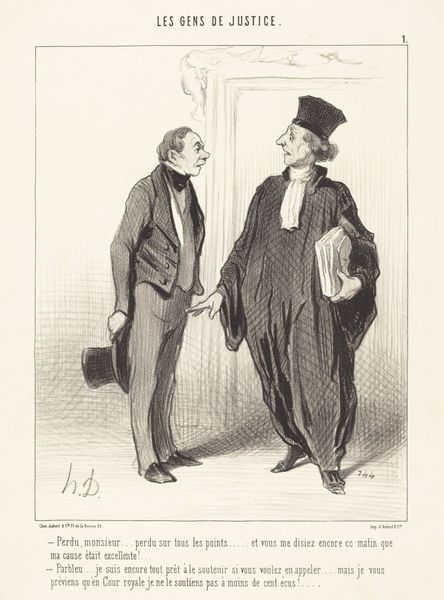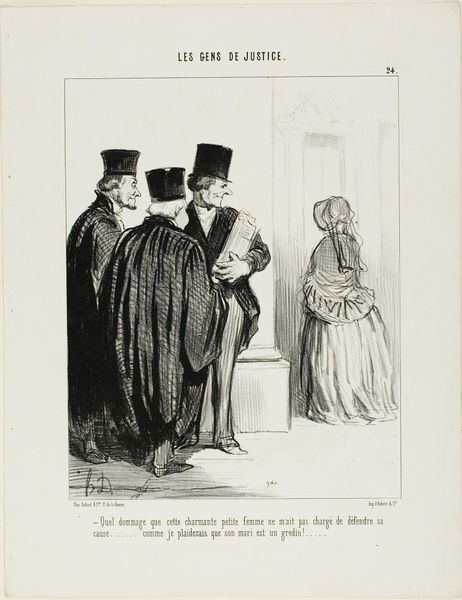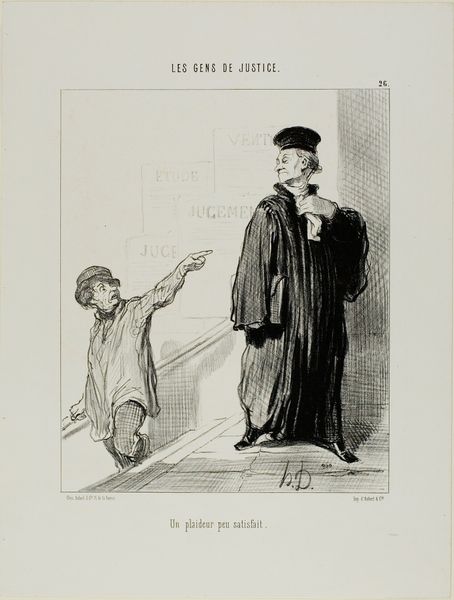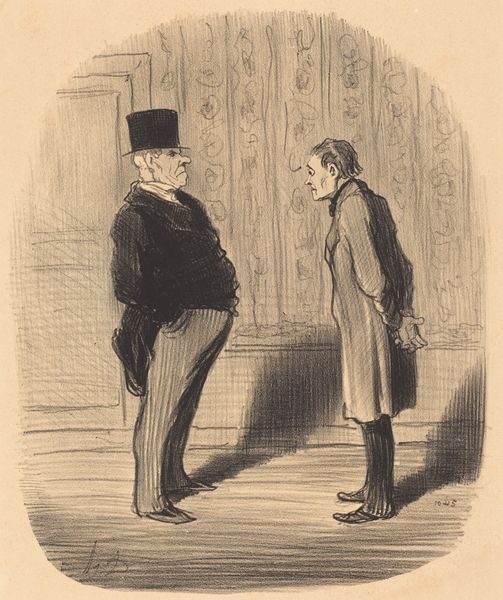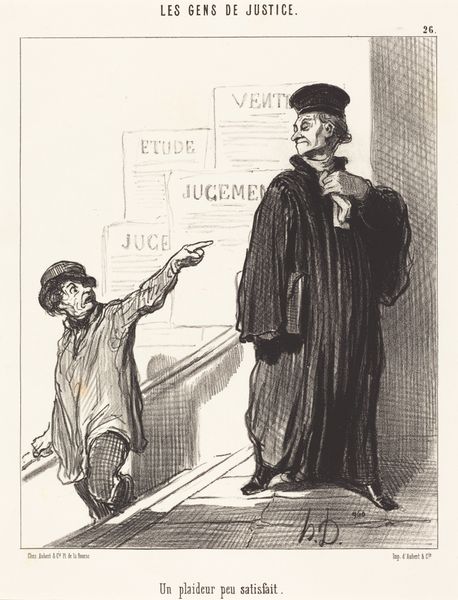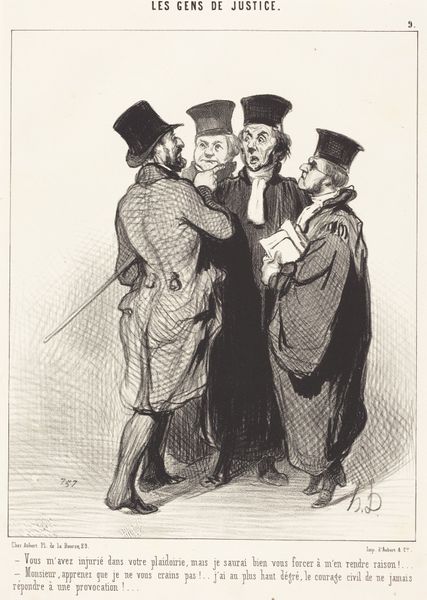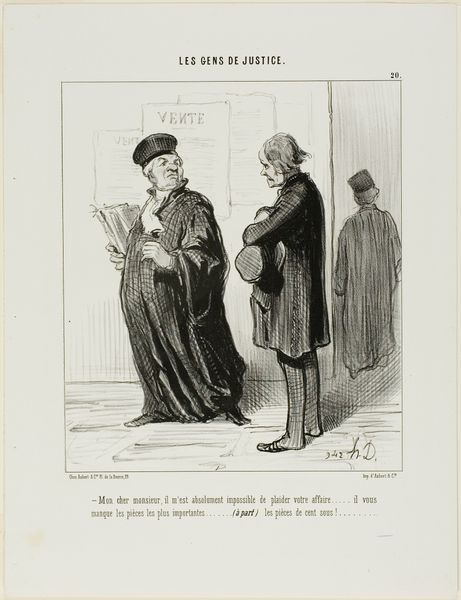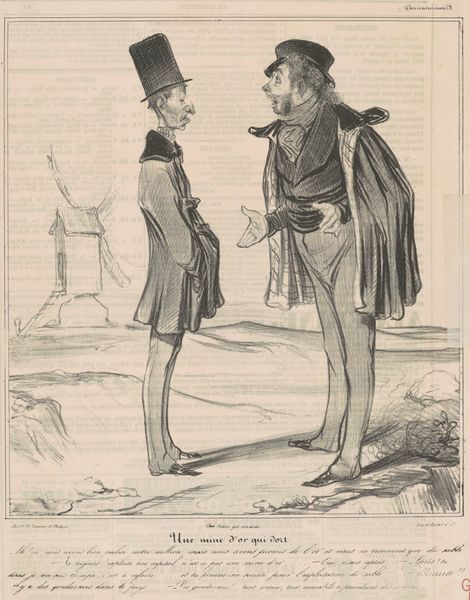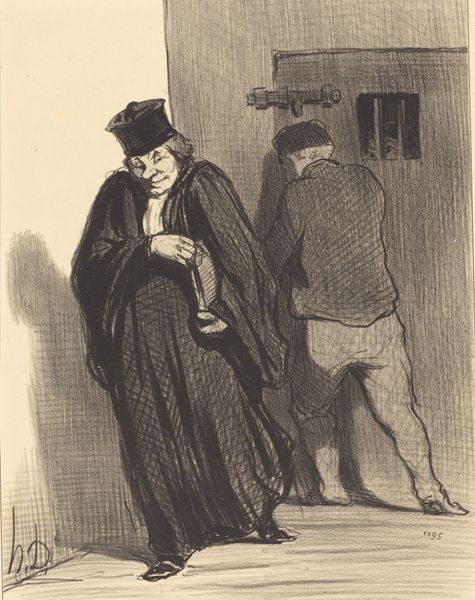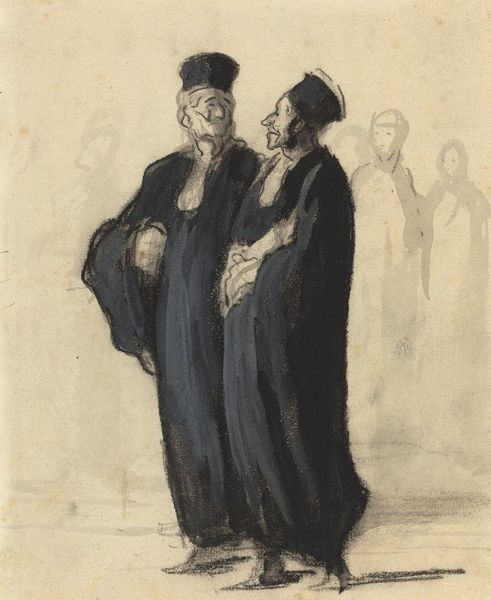
graphic-art, lithograph, print
#
graphic-art
#
16_19th-century
#
lithograph
# print
#
caricature
#
romanticism
#
genre-painting
Copyright: National Gallery of Art: CC0 1.0
Curator: Honoré Daumier created this lithograph, "Tiens v'la peut-être une pratique," around 1847. Editor: It feels instantly cynical. The dark robes of the lawyer contrast starkly with the fainter figures behind him; he certainly has a predatory air about him. Curator: Exactly. Daumier’s choice of lithography as a printmaking method is crucial here. Consider the physical labor involved: the grinding and polishing of the stone, the application of grease and ink. It mirrors the lawyer’s calculated exploitation of those seeking justice, doesn’t it? He likely churned these out quickly in lithographic studios that catered to a new and eager consumer market. Editor: Absolutely. And the image's caption reinforces that critique, translating roughly to "There's perhaps a client… I'll get in his way!” He seems almost gleeful at the prospect of profiting off their misery. The body language of the man in need really emphasizes that disparity. Curator: Think, too, about the social context. Daumier was deeply critical of the bourgeoisie, and legal figures like this were easy targets for his satirical eye. We see a system where justice becomes commodified. Editor: I'm particularly struck by the use of light and shadow. The deep blacks emphasize the lawyer's presence, visually enacting the weight of the legal system on those who can’t afford it, on those at the periphery. Also, the figures in the back all seem like part of the system and not working class, but people of class. They’re more defined by wealth than virtue. Curator: The exaggerated features characteristic of Daumier's work— the lawyer’s calculating gaze—serve to unmask the hypocrisy that he perceived in these circles. It's mass production and a tool for his social critique. Editor: And the fact that prints like these were so widely circulated also suggests a rising awareness, maybe even a dissatisfaction among the populace about inequalities inherent in their society and social systems. The composition guides our gaze, emphasizing this broken relationship between citizen and "justice." It challenges us to question that whole construction. Curator: I agree. Considering the social and economic conditions under which this lithograph was created and disseminated offers insights not only into its artistic process but also into the deeply flawed societal structure it depicts. Editor: Indeed, this piece remains so pertinent even today; a somber reminder of systemic exploitation.
Comments
No comments
Be the first to comment and join the conversation on the ultimate creative platform.
